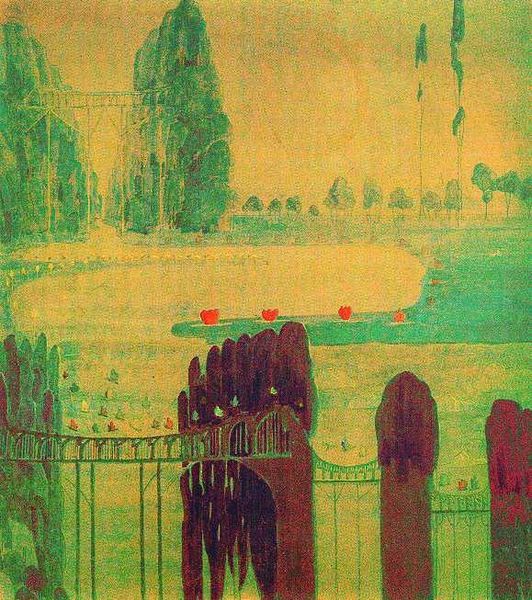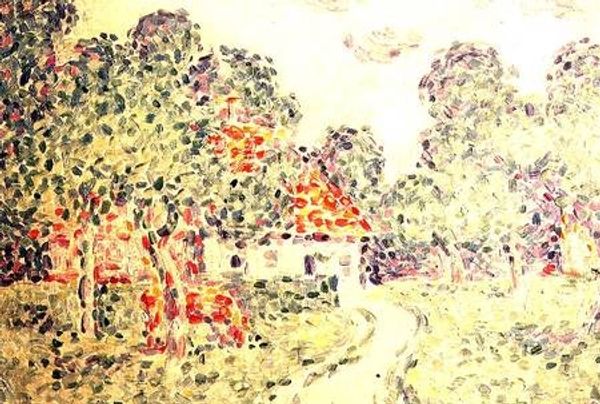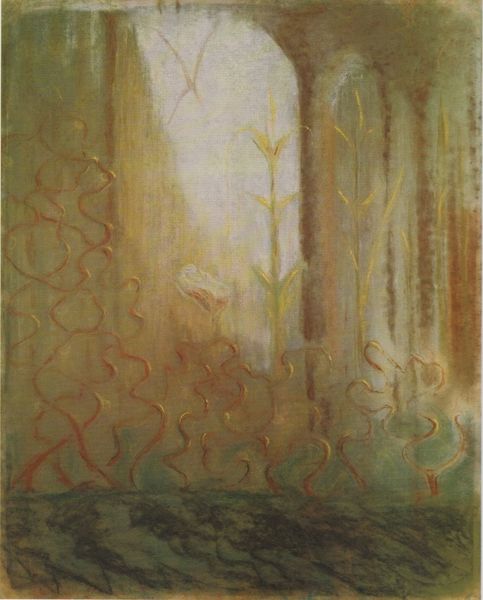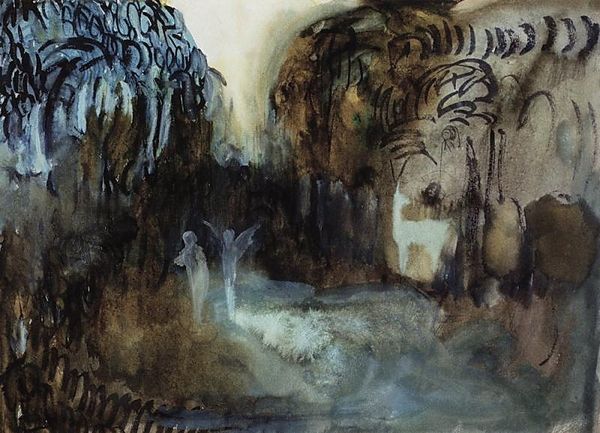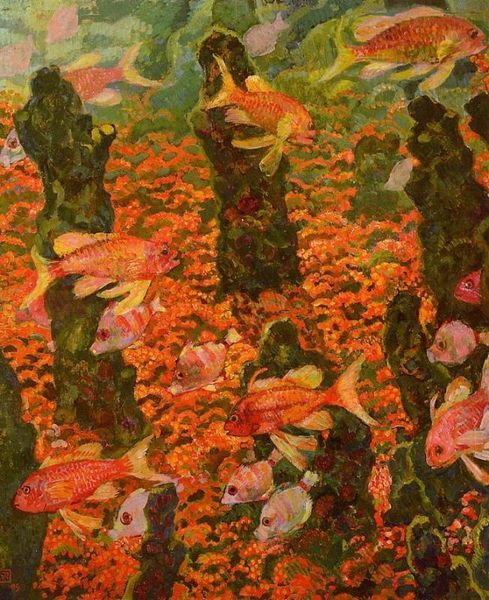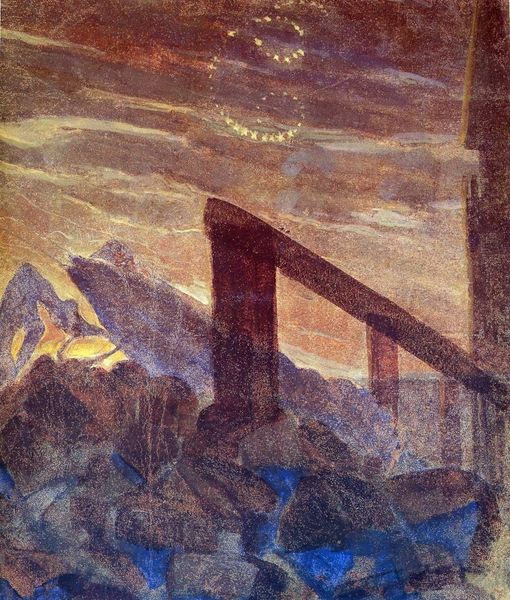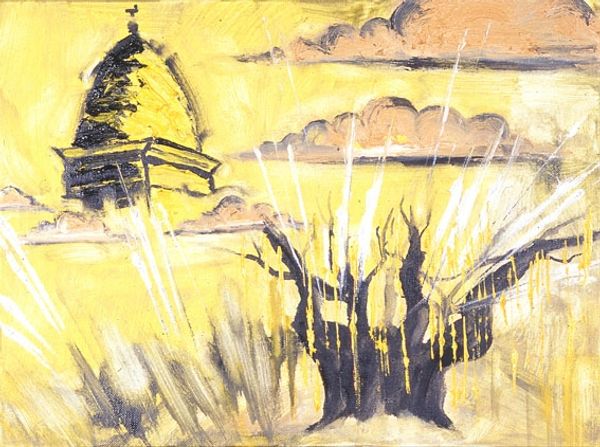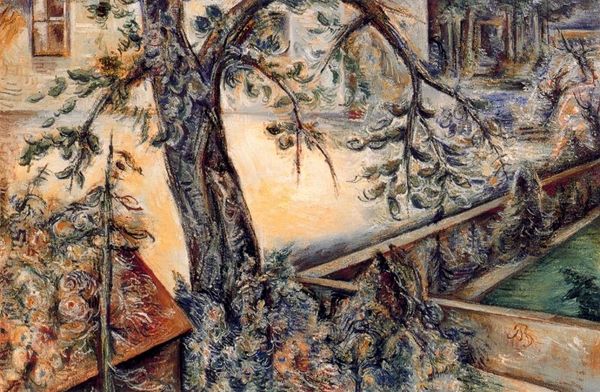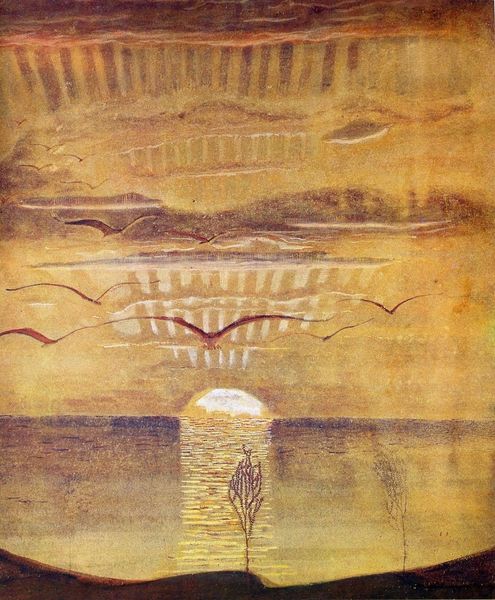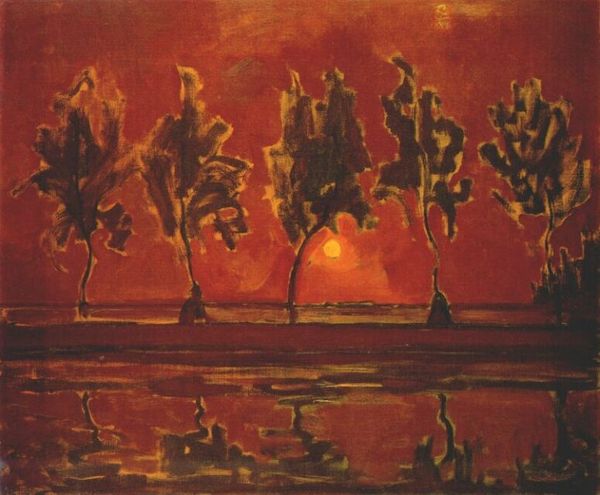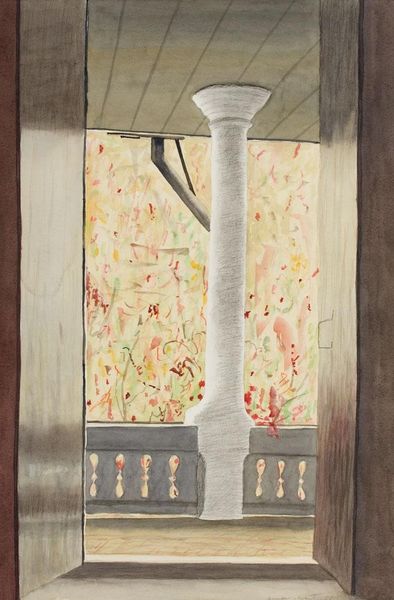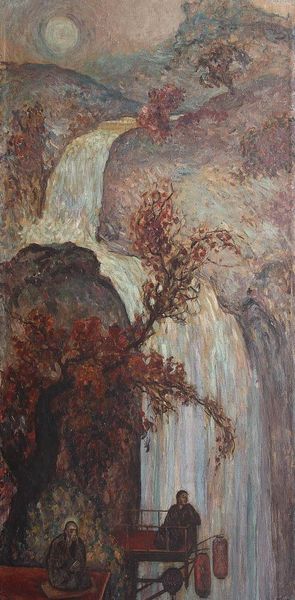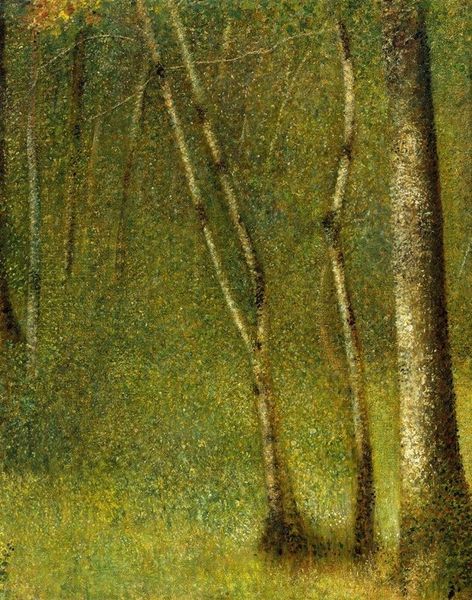
lithograph, painting
#
allegories
#
abstract painting
#
symbol
#
lithograph
#
painting
#
landscape
#
abstract
#
symbolism
Dimensions: 72.6 x 62.1 cm
Copyright: Public domain
Curator: Stepping up to "Scherzo (Sonata of the Summer)," created in 1907 by Mikalojus Konstantinas Ciurlionis, one is struck by its distinctive blend of landscape and symbolic elements, crafted using the techniques of painting and lithography. Editor: It's remarkably calming, isn't it? There's a lightness to it, almost like a visual representation of a gentle breeze. The colour palette feels warm and summery, but also… wistful? Curator: That feeling of wistfulness probably springs from Ciurlionis's symbolism. The trees, for example, are not just trees. The Lithuanian landscape becomes a repository for memory and spiritual depth, a continuity bridging pagan past and modern sensibilities. He’s exploring how our emotional landscape can be rooted in a physical one. Editor: So the recurring motif at the bottom isn’t purely decorative? It almost looks like architectural frieze detail, or a series of glyphs on an ancient tablet, giving off monumental vibes but also the impression that we are looking into a dream or fairytale scenery. Curator: Precisely. Ciurlionis was fascinated by the power of archetypes. He uses recurring symbols – the sun, birds, stylized vegetation, all meticulously arranged—to create a kind of visual language, intending the piece to resonate emotionally beyond literal interpretation. Editor: And the choice of form feels significant. To me it evokes something from Art Nouveau as it attempts to channel emotional and mystical themes through the combination of line and color that might reference nature and the organic forms. Did Ciurlionis intentionally choose this form? What was his relationship to his contemporary Symbolists? Curator: Yes, Ciurlionis was engaged with Symbolism, but also uniquely inflected with fin-de-siecle Lithuanian romantic nationalism. His goal extended past decorative art toward revealing unseen connections through what one might call a distinctly philosophical form of landscape. That makes his painting, especially, resonate powerfully even now. It’s interesting how the political investments in modern Lithuanian culture get rendered here—almost timeless. Editor: This work bridges emotional experience, visual artistry, and historical contexts, that really brings the painting to life. Thanks! Curator: Indeed, this fusion captures the spirit of its time. A thought to carry as we move on.
Comments
No comments
Be the first to comment and join the conversation on the ultimate creative platform.
